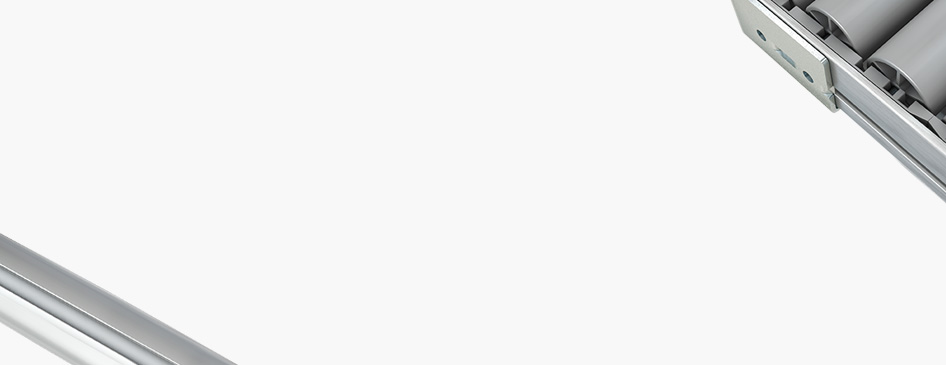
Seleccione uno
o más idiomas
0,1,3
- Alemán
- Inglés
- Chino
- Español
Acero con endurecimiento superficial
Los aceros con endurecimiento superficial son aceros especiales de alta calidad con contenidos de carbono de 1.0 a 2.0 y pueden ser endurecidos.
Debido a su bajo contenido de carbono, son usados para la recocción en atmósferas ricas en carbono a temperaturas de 850 a 950 °C. El carbono es suministrado en forma de polvo, gas, pasta o baño de sal. Dependiendo de la temperatura, se difunde en la zona marginal de la pieza de trabajo (carburación). En el caso de los aceros de nitruración (aleaciones de acero con los elementos formadores de nitruros, cromo, aluminio y vanadio), el nitrógeno también se puede agregar simultáneamente en los baños de sales cianuro (nitruración, carbonotruración).
Durante la carburación, el contenido de carbono en el área límite se incrementa entre un 0.8 y 0.9 %. Los contenidos mayores de carbono empeoran las propiedades del material de la capa superficial como resultado de una formación excesiva de cementita.
Debido a su mayor contenido de carbono, el acero con endurecimiento superficial ahora estará endurecido. Las posibilidades incluyen:
Endurecimiento sencillo: El acero es endurecido a la temperatura de endurecimiento del núcleo para optimizar sus propiedades básicas. El endurecimiento sencillo puede también incluir recocción intermedia si las áreas carburadas deben ser maquinadas.
Endurecimiento doble: El acero es primero calentado a temperatura de endurecimiento del núcleo y, después de enfriarse, es vuelto a calentar a la temperatura de endurecimiento de la superficie.
Endurecimiento directo a temperatura de carburación.
Los aceros con endurecimiento superficial adquieren capas superficiales con una excelente resistencia al desgaste y núcleos extremadamente resistentes. Se usan para artículos como ejes, engranes y pernos.
Einsatzstahl
Einsatzstähle gehören zu den Qualitäts- und Edelstählen mit Kohlenstoffgehalten von 0,1 bis 0,2 Prozent. Einsatzstähle sind härtbar.
Wegen ihres niedrigen Kohlenstoffgehaltes werden sie in kohlenstoffhaltiger Atmosphäre zum Glühen bei Temperaturen von 850 ° bis 950 °C eingesetzt. Kohlenstoff wird dabei als Pulver, Gas, Pasten oder Salzbäder zugeführt. Er diffundiert temperaturabhängig in die Randzone des Werkstückes (aufkohlen). Bei Nitrierstählen (Stahllegierungen mit Nitridbildnern Chrom, Aluminium, Vanadium) kann in Cyansalzbädern gleichzeitig Stickstoff zugeführt werden (aufsticken, carbonitrieren).
Beim Aufkohlen steigt der Kohlenstoffgehalt im Randbereich um 0,8 und 0,9 Prozent. Höhere Kohlenstoffgehalte verschlechtern die Materialeigenschaften der Randschicht durch zu hohe Zementitbildung.
Mit dem höheren Kohlenstoffgehalt wird der Einsatzstahl jetzt gehärtet. Möglich sind:
- Einfachhärtung: Erhitzt wird auf Kernhärtetemperatur, so dass der Stahl optimale Kerneigenschaften erhält. Einfachhärten kann auch mit Zwischenglühen erfolgen, wenn aufgekohlte Bereiche gespant werden sollen.
- Doppelhärtung: Zunächst wird auf Härtetemperatur des Kerns erhitzt, um nach dem Abkühlen erneut auf Randschichthärtetemperatur zu erhitzen.
- Direkthärtung bei Aufkohlungstemperatur
Anschließend haben Einsatzstähle Randschichten mit hohem VerschleißWiderstand und hochzähe Kerne. Einsatzstähle werden z. B. für Wellen, Zahnräder und Bolzen verwendet.
Case-hardening steel
Case-Hardening steels are high-quality special steels with Carbon contents of 0.1 to 0.2 percent and can be hardened.
Due to their low carbon contents, they are used for Annealing in a carbon-rich atmosphere at temperatures of 850 to 950°C. Carbon is supplied in the form of a powder, gas, paste or salt bath. Depending on the temperature, it diffuses into the workpiece's marginal zone (carburising). In the case of nitriding steels (Steel alloys with the nitride-Forming elements chromium, Aluminium and vanadium), nitrogen can also be added simultaneously in cyanide salt baths (nitriding, carbonitriding).
During carburising, the carbon content in the boundary area increases by 0.8 and 0.9 percent. Higher carbon contents worsen the Material properties of the surface layer as a result of excessive cementite formation.
Due to its higher carbon content, the case-hardening steel is now hardened. Possibilities include:
- Single hardening: The steel is heated to the core hardening temperature to optimise its core properties. Single hardening can also include intermediate annealing if carburised areas are to be machined.
- Double hardening: The steel is first heated to the core's hardening temperature and, after cooling, it is reheated to the surface hardening temperature.
- Direct hardening at the carburising temperature.
Case-hardening steels acquire surface layers with excellent Wear Resistance and extremely tough cores. They are used for items such as shafts, gears and bolts.
表面硬化钢
表面硬化钢是一种高品质的特种钢,其中碳含量为 0.1% 至 0.2%,并且可以被进一步硬化。
由于表面硬化钢的碳含量低,将其在 850〜950℃ 的温度、富含碳的环境中退火。其中碳以粉末、气体、糊剂或盐液的形式提供。根据不同的温度,碳扩散到工件的边缘区(渗碳)。渗氮钢(钢合金中含有元素铬、铝、钒的氮化物)时,氮也可以同时在氰化物盐液中加入(渗氮,碳氮共渗)。
渗碳期间,界面区域的碳含量增加了0.8%到0.9%。较高的碳含量导致过度渗碳体的形成,对材料表面层的性能产生不利影响。
由于其较高的碳含量,表面硬化钢现在可以硬化。可能的情况包括:
一次硬化:将钢加热到钢芯硬化温度,以优化其钢芯性能。如果需要对渗碳区域进行加工,一次硬化也需要中间退火。
二次硬化:首先将钢加热到钢芯硬化温度,然后冷却再将钢加热到表面硬化温度。
在渗碳温度下直接淬火冷却 。
表面硬化钢获得具有优良耐磨性的表面层和坚韧无比的钢芯。用于制造如轴、齿轮和螺栓等物品。
